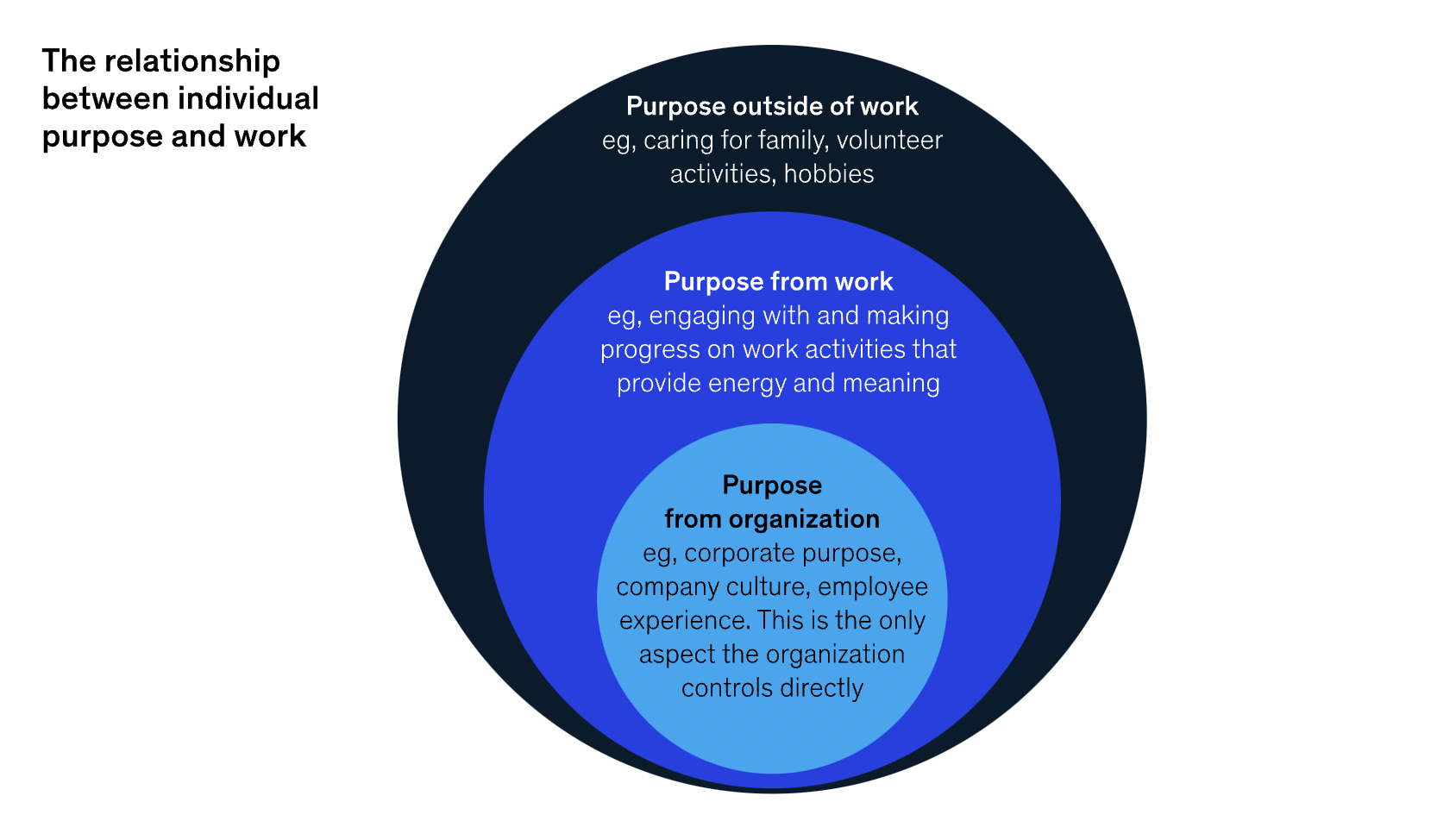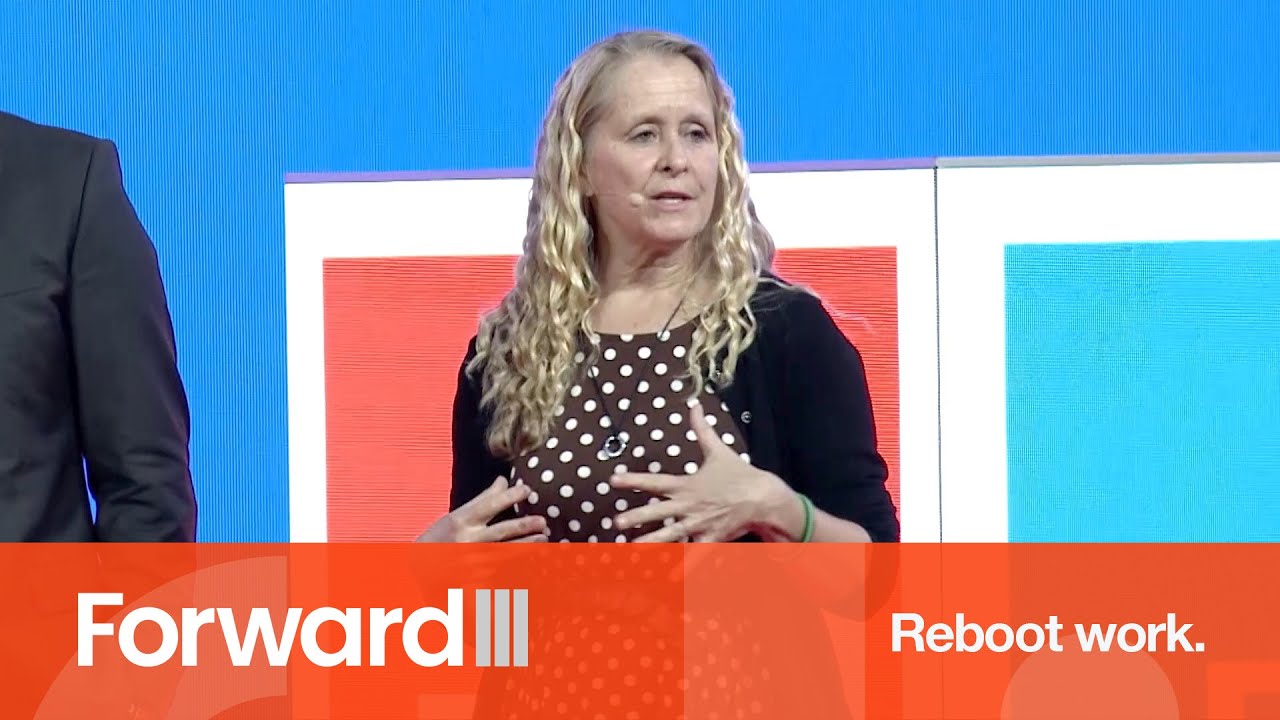Tackle Workforce Challenges in 2022 by Leveraging Automation for Good
Share at:

During the last two years, organizations have dealt with a wide range of changes and challenges. It started with the need to respond to the pandemic, dealing with supply chain disruptions, managing a remote workforce, and, more recently, the phenomenon known as the "Great Resignation." While employee engagement was an important priority even pre-pandemic, experts argue that attrition remains a top concern for leaders in 2022.
Furthermore, purpose is becoming increasingly important for how organizations operate. In today’s world, more and more companies are working to align their purpose with societal goals and strengthen their environmental, social, and governance (ESG) performance. Progress on ESG commitments is usually tracked through alignment to the United Nations (UN) Sustainable Development Goals (SDGs). According to a survey from McKinsey & Company, employees who have a strong sense of purpose at work are healthier, more productive, and more engaged.

At the same time, companies are expected to continue accelerating their digital transformation strategies. For example, Statista estimates digital transformation spending worldwide to reach $1.8 trillion in 2022 and $2.8 trillion by 2025. One older challenge is likely to become more prominent in this context—the digital skills divide.
While there are many ways organizations can contribute to the realization of the UN SDGs, the role of digital technologies shouldn’t be overlooked.
So, how can leaders harness the transformational potential of automation while putting people and their skills at the heart of their digital strategy? Here are a few ideas for how organizations can leverage automation as a force for good and help organizations achieve greater positive impact:
1. Aligning automation capabilities with sustainable development goals
For those already familiar with automation, its ability to drive speed and efficiency, reduce errors, and create more meaningful work isn’t something new. Furthermore, as organizations advance further in their automation journeys, they add new indicators of automation success, such as employee satisfaction and engagement.
Another recent survey from McKinsey revealed that contributing to society and creating meaningful work are the top two priorities of employees (1,000 participants from United States companies were surveyed).
Businesses that are looking for ways to harness the power of digital technologies to accelerate their purpose and ESG commitments should consider a four-step approach:
Map your organization's goals and metrics related to sustainability, the environment, or other UN SDG
Identify processes and data flows to assess opportunities to automate
Redesign and improve processes to support ESG goals, if applicable
Collect data and track progress to help overall ESG reporting
Following that approach, organizations will improve their ESG performance while also enabling innovation and creativity and fostering a sense of belonging.
For example, by automating a process related to handling hospital appointments, Helse Vest reduced the number of letters that needed to be mailed, thus improving the authority’s environmental footprint. Another example comes from the Czech Republic, where the Regional Authority of the Moravian-Silesian region used automation to speed up the provision of green boiler grants to 1.2 million citizens, which helped improve the air quality in the region and its surroundings.
Other use cases include leveraging data capturing and processing capabilities of automation to report on ESG goals, optimizing the supply chain, monitoring air and water quality, implementing waste management programs, or processing energy consumption data with speed and accuracy. By way of example, the UiPath IT organization managed to reduce cloud computing usage by 65% and 98% in areas relating to IT service management and cybersecurity functions by streamlining IT helpdesk processes.
2. Partnering to deliver automation training and skills development programs
Even before the pandemic, the need to invest in upskilling and reskilling was a priority for many organizations. However, the rapid shift to a virtual workplace and the increased use of digital technologies have accelerated the importance of building new skills.
A recent survey carried out by UiPath revealed that one in three executives surveyed consider lack of skills training a reason for people leaving their jobs. Furthermore, 85% of executives believe that "incorporating automation and automation training into their organization will help them retain employees and attract new talent."
According to the World Economic Forum (WEF) report Upskilling for Shared Prosperity, investment in upskilling has the potential to boost gross domestic product (GDP) by $6.5 trillion by 2030, assuming that skills gaps are closed by 2028. The report also states that upskilling could lead to the net creation of 5.3 million new jobs by 2030. The economic gains would come from skills enhancement and the opportunity to take on the jobs created by the fourth industrial revolution, such as data analysts and scientists, artificial intelligence (AI) and machine learning specialists, big data specialists, process automation specialists, and robotics engineers. For more details regarding in-demand jobs, read the complete WEF Future of Jobs Report 2020.
While employers are doubling down on upskilling and reskilling, the WEF "Future of Jobs Report 2020" also reveals that there is significant room for improving employee engagement in training courses, as only "42% of employees are taking up employer-supported reskilling and upskilling opportunities."
To maximize the impact and engagement of their skills development programs, companies should explore opportunities to collaborate with external stakeholders such as educational institutions, governmental bodies, non-governmental organizations (NGOs), other organizations, and the wider community.
According to the IDC white paper Automation as a Force for Good – 6 Steps to Transform Theory into Practice, greater impact can be achieved by creating “ecosystems of excellence,” formed by multiple actors determined and motivated to tackle the digital skills gap jointly. Joining forces with other organizations increases access to resources and helps identify new opportunities to tackle the digital divide, promote inclusion, and reduce inequality. For instance, dentsu, AutonomyWorks, and UiPath partnered to help upskill people on the autism spectrum and empower them to build their own software robots.

3. Creating value through volunteering
One of the main benefits of using automation is the return on time, which employees can then use to focus on more engaging and critical work. While gaining back time and resources is vital to the resilience and competitiveness of today’s organizations, access to such outcomes is not exclusive to the public and private sectors.
The nonprofit sector can benefit significantly from using automation to streamline internal processes, thus increasing capacity, and improving operations to accelerate their missions. Nonprofit organizations can use UiPath Automation Cloud™ Community version at no cost to start their automation journey and accelerate their mission. They can also build automation skills through our open and free online Academy, which is accessible to students and learners worldwide.
The National COVID-19 Community Impact Survey provides critical insights regarding the impact of the pandemic on low- to moderate-income communities in the United States (U.S.) and the entities that serve them. The survey (conducted in August 2021) revealed that nearly 70% of nonprofits saw an increase in demand for services. However, 46% indicated a decrease in their ability to meet such needs, and nearly 70% experienced increased expenses. Now, more than ever, nonprofits need to find ways to strengthen their digital capacities and develop future-ready skills.
Related article: Why RPA Is the Missing Puzzle Piece for Nonprofit Digital Transformation
At the same time, many studies indicate that promoting a culture of employee volunteering improves employee morale and helps attract and retain top talent. Moreover, creating opportunities for employees to volunteer their time and skills to support nonprofits can be very valuable for communities. This type of volunteering is known as “skills-based volunteering”.
According to a research paper published by the Chief Executives for Corporate Purpose (CECP), Giving in Numbers™, the median number of hours employees volunteered in 2020 when organizations included skills-based programs was higher (47,000) than when such types of programs weren't available to employees (10,000). Another important aspect is that skills-based volunteering can be done remotely.
By creating opportunities for employees to leverage automation skills to help nonprofits advance their automation journeys, organizations can help:
Improve employee engagement
Foster meaningful social connections
Increase nonprofits capacity to achieve social impact
Partnerships with other organizations should also be explored and developed to increase reach and engagement. One such example is the collaboration between UiPath and The New York Foundling, one of New York City’s largest providers of foster care for children and youth. By leveraging automation, the organization saves 100,000 hours in manual work annually, allowing clinicians to spend more time with the families that the Foundling works with.

Have three minutes? Answer six questions to receive fully personalized guidance from IDC on how to use Automation for Good to empower the human workforce.

Public Affairs & Social Impact Director, UiPath
Get articles from automation experts in your inbox
SubscribeGet articles from automation experts in your inbox
Sign up today and we'll email you the newest articles every week.
Thank you for subscribing!
Thank you for subscribing! Each week, we'll send the best automation blog posts straight to your inbox.



